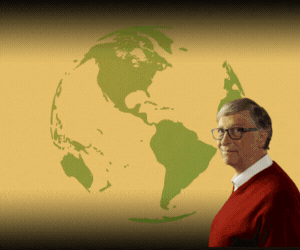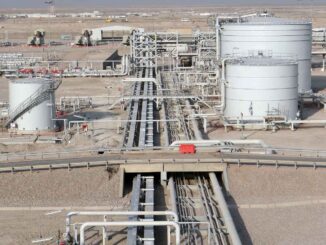
In a move that underscores the delicate balancing act facing global oil producers, OPEC+ has agreed to a modest production increase of 137,000 barrels per day (b/d) for December 2025, while simultaneously announcing a three-month pause on further hikes from January to March 2026.
This decision, influenced heavily by recent U.S. sanctions on Russia, reflects a cautious approach amid fluctuating demand signals and geopolitical tensions. As the cartel navigates these challenges, Saudi Arabia’s actions—such as deploying oil rigs from storage—signal confidence in an upcoming demand rebound. Below, we break down the implications for oil markets and key indicators investors should monitor.
The OPEC+ Decision in Context
OPEC+, the alliance of OPEC members and allies like Russia, has been methodically unwinding production cuts implemented during the height of the COVID-19 pandemic. Recent months have seen incremental increases, with hikes ranging from 137,000 b/d to over 500,000 b/d depending on market conditions.
The December boost aligns with this pattern, adding a small volume to global supply in the short term. However, the subsequent pause marks a shift: it’s a direct response to uncertainties, including Russia’s constrained ability to ramp up output under new sanctions.
This isn’t the first time OPEC+ has adjusted its strategy. In October, the group approved a similar 137,000 b/d increase for November, amid concerns over oversupply.
By pausing from January, OPEC+ aims to assess winter demand trends, potential economic slowdowns in major consumers like China and Europe, and the impact of non-OPEC production growth from countries like the U.S. and Brazil. Analysts at Standard Chartered have noted that such modest adjustments, combined with compensation cuts from overproducers like Iraq, could effectively neutralize much of the net supply addition.
Implications for Oil Markets
This calibrated approach is likely to support oil prices in the near term by preventing a flood of supply. Brent crude, currently hovering around $75-80 per barrel, could see stabilization or modest upside if demand holds steady through the holiday season. The pause signals OPEC+’s wariness of a potential surplus in early 2026, especially if global economic growth falters. For instance, if U.S. shale output continues its robust expansion—projected at over 500,000 b/d in 2026—the market could tip toward oversupply without OPEC+’s restraint.On the flip side, the decision highlights internal dynamics within the cartel. Russia’s advocacy for the pause, post-sanctions, suggests production challenges that could limit its compliance, potentially shifting more market share to Saudi Arabia and the UAE.
Overall, this could foster a more balanced market in Q1 2026, with prices potentially ranging between $70-85 per barrel, assuming no major disruptions like escalated Middle East conflicts.
Saudi Arabia’s Rig Moves: A Bullish Signal on Demand
Adding intrigue to the OPEC+ narrative is Saudi Arabia’s recent activity in reactivating oil rigs from storage. While the Kingdom’s oil rig count dipped to a 20-year low of 20 in July 2025—down from 46 in early 2024—this decline was partly due to a pivot toward gas development.
However, recent tenders for additional rigs, including eight from Halliburton, indicate a reversal.
Saudi Aramco’s record upstream investments in 2025, projected to lead the Middle East in oil and gas spending, further underscore this.
Why now? Riyadh appears to anticipate stronger global demand in 2026, driven by economic recovery and reduced oil use in power generation as gas alternatives come online.
The International Monetary Fund (IMF) recently upgraded Saudi Arabia’s 2025 GDP growth forecast to 4%, citing expected rises in oil production.
This rig reactivation suggests the Kingdom is positioning itself to capture market share if demand surges, potentially offsetting any OPEC+ pauses with unilateral increases if needed. It’s a clear bet on upside risks, contrasting with the cartel’s broader caution.
What Should Investors Look For?
For investors in energy stocks, ETFs, or futures, this OPEC+ move presents both opportunities and risks. Here’s a checklist of key factors to watch:
Demand Indicators: Monitor global economic data, particularly from China (e.g., PMI indices) and the U.S. (e.g., job reports). A rebound in manufacturing could validate Saudi Arabia’s optimism and push prices higher.
Inventory Levels: Weekly EIA and API reports on U.S. crude stockpiles are crucial.
Builds during the pause period could pressure prices downward, while draws might signal tightening markets.
Geopolitical Developments: Escalations in Ukraine or the Middle East could disrupt supply, overriding OPEC+’s plans. Conversely, eased sanctions on Russia might accelerate hikes post-March.
Non-OPEC Supply Growth: Track U.S. shale rig counts via Baker Hughes data. If they rise sharply, it could cap price gains despite OPEC+’s restraint.
Currency and Interest Rates: A stronger U.S. dollar or Federal Reserve rate hikes could dampen oil demand by making it costlier for non-dollar buyers.
Saudi Production Signals: Keep an eye on Aramco’s quarterly reports and rig deployment updates. If rig counts climb above 30 by Q1 2026, it could foreshadow aggressive output ramps.
In summary, OPEC+’s December increase and subsequent pause are a pragmatic response to an uncertain landscape, likely stabilizing markets in the short term while allowing flexibility. Saudi Arabia’s rig moves add a layer of bullish sentiment, hinting at demand growth ahead. Investors should stay vigilant on macro indicators to navigate potential volatility—after all, in oil markets, today’s pause could be tomorrow’s pivot. For more insights, subscribe to Energy News Beat Channel updates.
Got Questions on investing in oil and gas?
ENB Top News
ENB
Energy Dashboard
ENB Podcast
ENB Substack








Be the first to comment